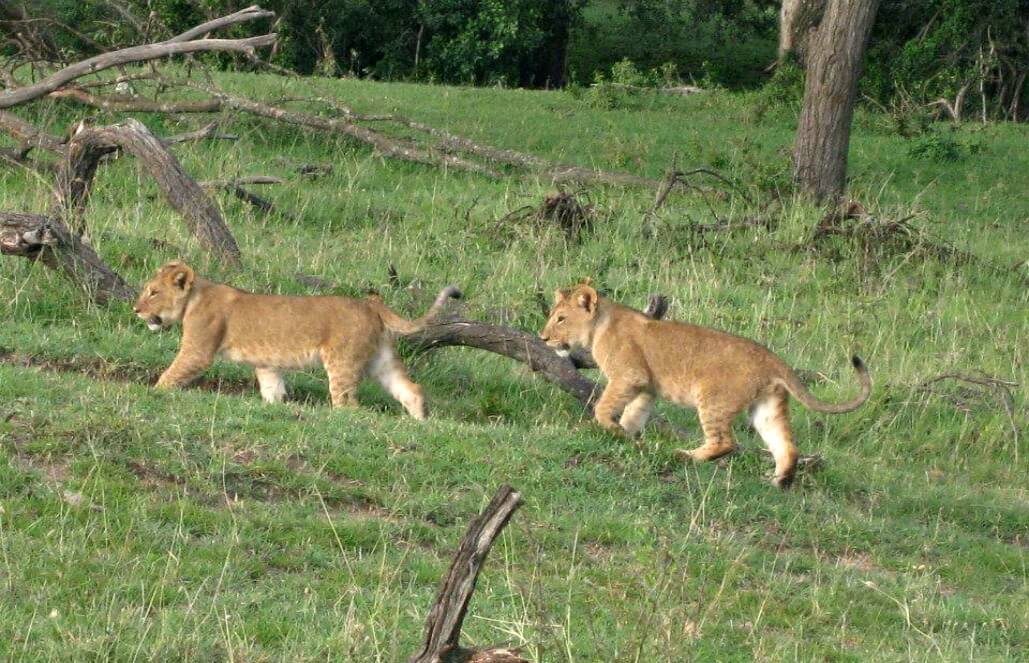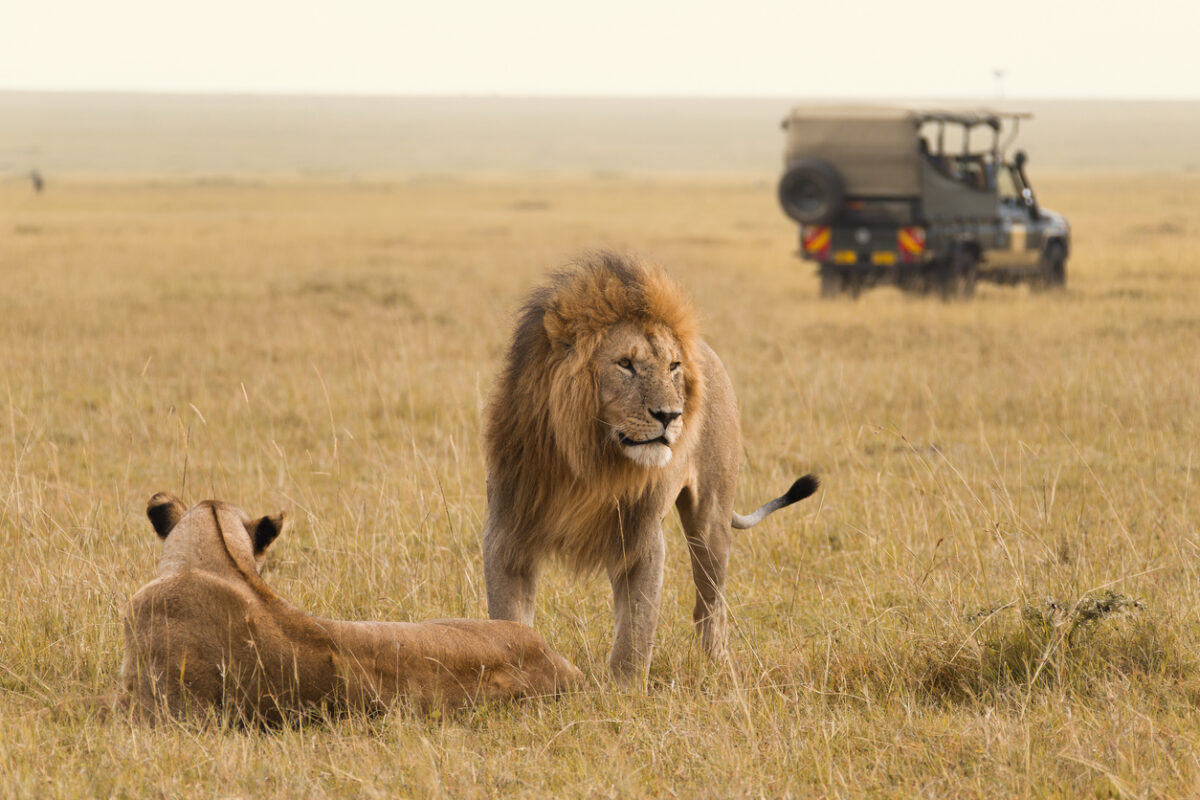Kenya, the heart of East African safaris, features wildlife roaming amid savannah, mountains, and Rift Valley lakes. From the Masai Mara’s plains, where over two million animals migrate during the Great Migration, to the tectonically formed Rift Valley with its escarpments and soda lakes, Kenya resembles a National Geographic scene. Its nature blends with diverse cultures like the Maasai and Turkana, and a vibrant city life in Nairobi.
Beyond the Big Five and landscapes, Kenya offers opportunities to connect with locals and support conservation through volunteer programs focused on wildlife research, the environment, community, and health.
Volunteer Opportunities in Kenya
Wildlife and Conservation Projects
Masai Mara Lion & Wildlife Conservation
Head to the famed Masai Mara to support a lion and wildlife conservation project. Volunteers assist rangers with big‑cat monitoring, wildlife counts, data collection on lions, cheetahs, and African wild dogs, and removal of invasive plant species.

Participants also help build predator‑proof “bomas” (livestock enclosures) for local Maasai herders and contribute to conservation management plans. Living in the Pardamat Conservation Area means you’ll wake to the roar of lions and witness real‑time conservation in action.
Big Cat Conservation & Elephant Research
African Impact’s project in the Greater Masai Mara Ecosystem immerses volunteers in applied wildlife research. Participants conduct field‑based monitoring of lions, leopards, cheetahs, and elephants while also engaging in physical conservation tasks such as invasive species removal, soil erosion control, building predator‑proof bomas, and opening new game drive tracks.
The project emphasises community outreach that spreads eco‑awareness in local Maasai communities, helping to empower people while improving environmental sustainability.
Wildlife Conservation in Nakuru
Nakuru County’s wildlife conservancies protect endangered species such as the Rothschild giraffe. Volunteers in this program learn firsthand about wildlife conservation, assist local rangers, and help track giraffes, birds, and colobus monkeys.
Tasks include ecological monitoring, conducting wildlife censuses, receiving training from local specialists, and taking part in various conservation activities around the reserve. It’s a fantastic opportunity to contribute to research without any classroom duties.
Environmental Conservation
Environmental Conservation in Nakuru
Kenya’s ecosystems need reforestation and sustainable agriculture to thrive. This project offers hands‑on work planting seedlings and trees, maintaining a tree nursery, creating educational campaigns on reforestation and climate change, and developing a “green wall” using recycled plastics.
Volunteers also get involved in community vegetable gardens, learning about permaculture and sustainable farming. It’s a great option for eco‑minded travellers who enjoy working outdoors.
Environmental Conservation at Kakuma Refugee Camp
In remote Kakuma Refugee Camp, volunteers support environmental conservation by working with local communities on waste management and biodiversity, planting trees, establishing recycling systems, and working with a tree nursery.
The project not only improves living conditions for refugees but also helps restore fragile desert ecosystems.
Community and Infrastructure Projects
Construction & Renovation in Nakuru
If you enjoy tangible results, consider helping local workers build and renovate community infrastructure. Volunteers assist skilled workers on projects such as pitch flattening, constructing walls and roofs, painting buildings, improving sanitation facilities, and revamping community centres. You’ll develop teamwork skills while providing valued assistance to local builders.
The program also encourages cultural exchange through conversations with residents and fellow volunteers.
Construction at Kakuma Refugee Camp
Kakuma’s refugee camp shelters people from over 17 countries. Volunteers help construct or renovate classrooms, community centres, and housing to create safer, more dignified spaces. Tasks include mixing concrete, laying bricks, painting, and general labour.
By improving infrastructure, you support education and economic opportunities without participating in classroom activities.
Gender Equality
Women’s Empowerment in Nakuru
This program focuses on empowering women in rural Kenya. Volunteers join self‑help groups, teach skills they possess (such as crafts or basic business knowledge), and contribute to the well-being of women in the program. Activities may include educating women on budgeting, entrepreneurship, and financial literacy, helping them develop skills in personal growth, and taking time to listen to their circumstances.
The focus is to boost confidence and economic independence.
Medical and Healthcare Placements
Medical Care & Nursing Project
Based in Limuru near Nairobi, this program allows volunteers to assist healthcare professionals in local clinics and hospitals. Volunteers help doctors and nurses with routine clinical work, which might include wound care, administering vaccinations, or recording patient information.
Participants also engage in health education workshops focusing on topics like nutrition and HIV/AIDS. The role is observational and supportive, offering invaluable insight into Kenya’s healthcare system without any childcare duties.
Medical Volunteer Project in Kenya
Another option for healthcare‑minded travellers is Volunteering Solutions’ medical program in suburban Nairobi. Volunteers are placed in clinics or hospitals where they assist doctors and nurses, observe surgeries, help with rounds, and gain exposure to different medical departments.
The experience is ideal for pre‑medical or nursing students seeking practical exposure while travelling.
Making the Most of Your Volunteer Trip
Kenya’s volunteer projects often operate in areas brimming with natural and cultural attractions. If you’re participating in a conservation project near the Masai Mara or Nakuru, schedule a safari to witness the Great Migration or see endangered rhinos. During time off from construction or environmental work, explore Nairobi National Park, visit the Karen Blixen Museum, or take a day trip to Hell’s Gate National Park in the Great Rift Valley. Many programs also organise weekend activities such as hiking Mount Kenya or visiting the coast.
Before choosing a project, consider the season. Kenya has two rainy seasons—March to May and October to December—and wildlife viewing is often best during the drier months (June to September, January to February). Ensure you have travel insurance, necessary vaccinations, and an appropriate visa. Most organisations require background checks, especially for community‑based work.
Your Kenya Adventure Awaits!
Travelling to Kenya is a sensory experience: the scent of acacia blossoms, the sight of giraffes silhouetted against a savannah sunset, the rhythmic chants of Maasai warriors. But beyond the game drives and photo ops lies a chance to contribute to conservation and community development.
Your time and skills can make a lasting difference. These programs allow you to immerse yourself in Kenya’s landscapes and cultures while aligning your travel with purpose.
Kenya’s allure doesn’t end when the safari vehicle stops. Volunteer, learn, explore, and return home enriched by the knowledge that you’ve helped preserve some of Earth’s most spectacular places and empowered the people who call them home.


Munira Maricar · Travel Writer
With an international living background spanning Singapore, Qatar, Japan, and Mexico, Munira enjoys sharing insights on immersive travel while emphasizing the vital role of cultural respect and ethical engagement. Her extensive experience offers a unique perspective that inspires others to explore the world through service, ensuring that every journey respects and contributes positively to local traditions and communities.